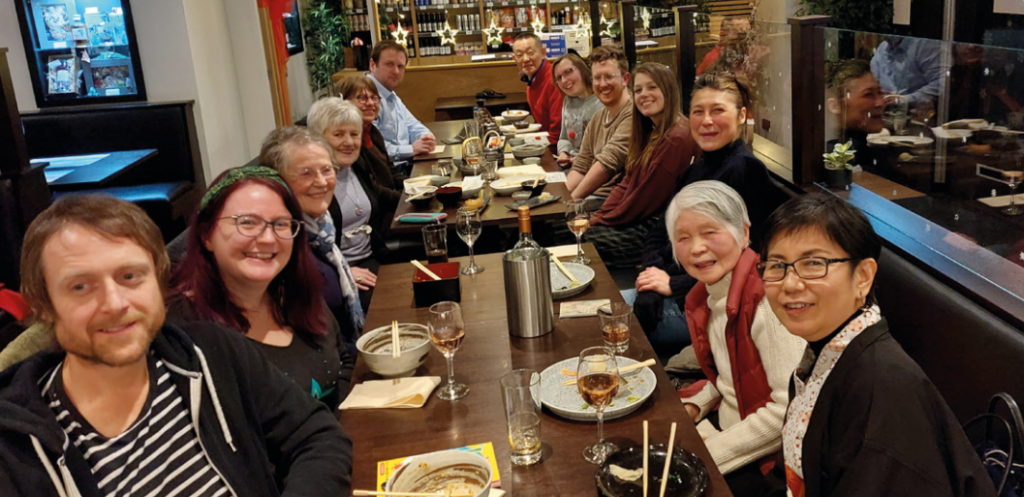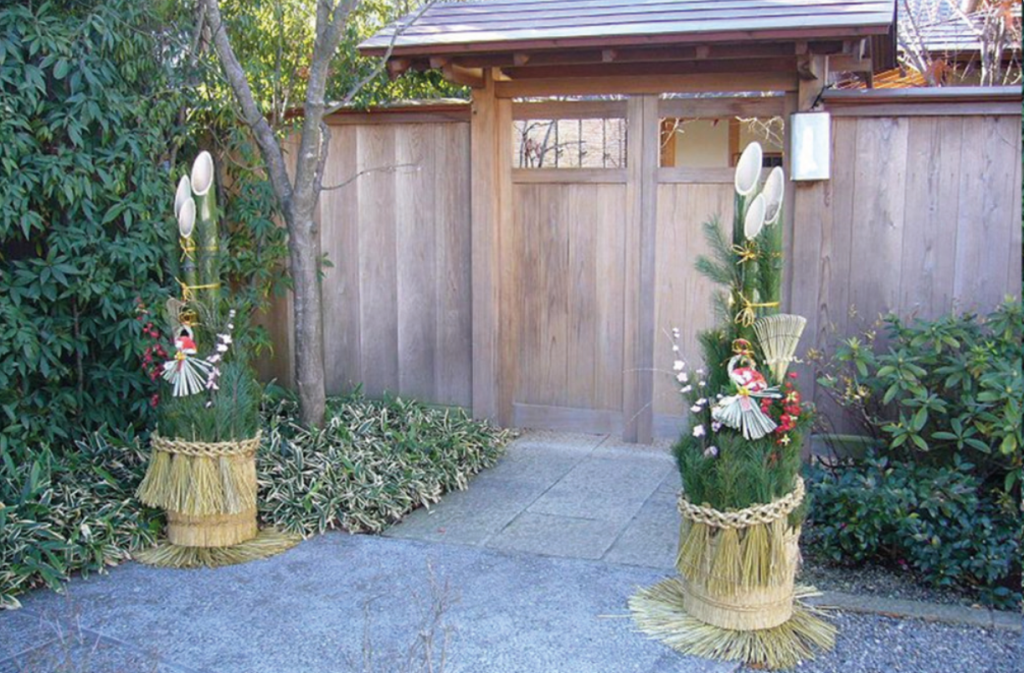By Angela Davies
All over Japan company employees, club members, societies and many other groups celebrate a Bōnen-kai (忘年会) or a “forget the year party/get together”. These start about the middle of December, and a bit like Christmas parties in the West, it’s a time to “eat drink and be merry”. Drinking as much as you can (飲み放題- nomihōdai) is a feature of these get togethers. They are held in restaurants or more commonly an Izakaya (居酒屋) which is like a pub, but with really nice food. Both places have the facilities for
Kara-oke as well, which is a big feature of Bōnen-kai. Bōnen-kai are also an opportunity for old friends, who haven’t seen each other for a while, to get together.

December 2022 Conversation Evening group at Etsu, Liverpool
Photo courtesy & copyright of Angela Davies
In the case of companies, at the Bōnen-kai, all the staff can get drunk if they want to, and it’s an opportunity to reflect upon the year and also to complain about any grievances to one’s boss or anyone else! More importantly people also make a point of thanking friends and colleagues for everything they have done during the past year and look forward to next year. Speeches from Managing Directors will also include this important phrase:
今年いろいろとありがとうございました。来年またよろしくお願いします
(kotoshi iroiro to arigatou gozaimashita. rainen mata yoroshiku onegaishimasu)
New Year (Shinnen 新年) is one of the most important festivals in the Japanese calendar. The Shinnen-kai (新年会) is not necessarily held on the 31st December as in the West, but parties usually take place between the 29th of December and 3rd of January when most people are off work.
Families visit their local shrine (Shinto) often dressed in kimono and pray for good health, success in studies and business in the coming year. People also send New Year cards (nengajō 年賀状) and gifts of food. The festival lasts until 7th January although in the olden days it went on longer. Outside doors people place the kadomatsu symbolising purity (plum blossom), longevity (pine) and constancy (bamboo).

Photo courtesy of Angela Davies
There are a number of traditional foods eaten, most of which is usually prepared the previous day so
that no cooking needs to be done on New Year’s day. This means that much of the food is preserved
with sugar, vinegar and salt; because of this, people sometimes don’t bother to eat strong tasting foods
and opt for sashimi or even beef instead. However, when more traditional dishes are served they
often also hold symbolic significance. For instance, Kuro-mame, or black soy beans, are eaten for good
health; whilst Date-maki, a sweet omelette mixed with fish paste or shrimp, and presented to look
like a scroll, is for academic success. Other foods eaten include Takazukuri, baby sardines cooked until
they are crunchy and sweet and symbolising hope for an abundant harvest, and Kazunoko, a salted and
marinated herring roe which is a symbol of fertility, as is Konbumaki herring wrapped in konbu seaweed
and stewed.
There is also the well-known o-zoni soup, the only hot dish served at home, with sticky mochi rice cakes which cause a number of deaths each year among elderly people with false teeth, since these rice cakes stick to the teeth and can only be extracted with great difficulty!
Kite flying is a popular pastime for children at New Year; because of this kite-flying in ukiyo-e prints often represents New Year’s Day.
Once again, companies and groups have parties with plenty of alcohol. Unlike the Bōnen-kai people don’t complain, but look forward to the year ahead, and the committee for JSNW would like to extend this same message to all of our members:
“去年いろいろとありがとうございました。今年もよろしくお願いします” .
(kyonen iroiro to arigatou gozaimashita. kotoshi mo yoroshiku onegaishimasu)
Thank you for everything last year, and we look forward to your support in the year ahead!
This Article by Angela Davies is one of many originally published in Issue 70 of the JSNW Newsletter, issued quarterly to society members. See here for more details on becoming a member.